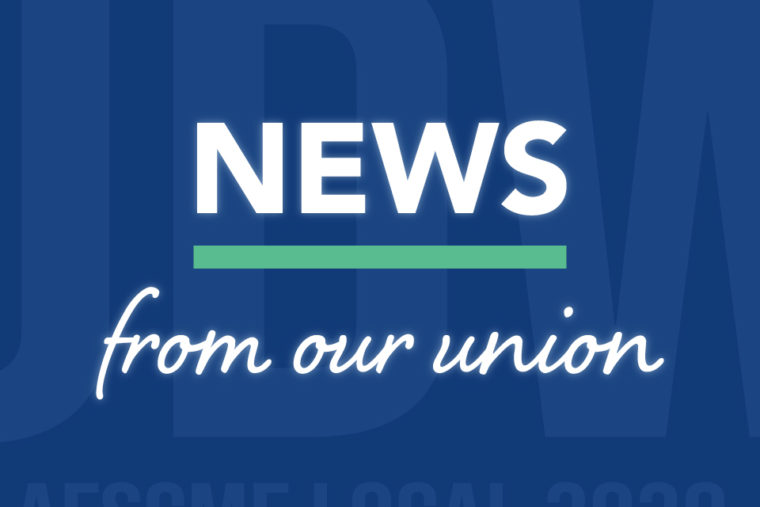Howard Bedlin, NCOA, May 23
Straight Talk for Seniors®: 10 Ways the Administration’s Budget Would Impact Senior Programs
The White House released its first full budget proposal today, and it includes historic cuts to—and even elimination of—programs that older adults and their families have relied on for more than 50 years.
Congress has indicated that it will develop its own FY18 budget, so the Administration’s proposal is just that—an outline of its funding priorities. However, it does set up the debate for the coming fiscal year.
Here are 10 ways the Administration’s budget—if enacted—would impact senior programs:
Medicaid: Cut by $627 billion
The budget cuts Medicaid by $627 billion over 10 years. This is on top of the $839 billion proposed cut in the House of Representatives’ American Health Care Act, which would repeal and replace parts of the Affordable Care Act. Taken together, this would mean almost $1.3 trillion in Medicaid cuts over 10 years, an estimated 45% reduction in 2026. Nearly 7 million low-income seniors rely on Medicaid for their health and long-term care.
Senior Community Service Employment Program (SCSEP): Eliminated
The budget eliminates the nation’s only job training and placement program specifically for older adults. Last year under SCSEP, 70,000 older adults received on-the-job training while providing nearly 36 million hours of staff support to 30,000 organizations.
Medicare State Health Insurance Assistance Program (SHIP): Eliminated
The budget eliminates this program that each year supports 15,000+ counselors who provide free, state-specific assistance to over 6 million beneficiaries.
Low-Income Home Energy Assistance Program (LIHEAP): Eliminated
The budget eliminates this program that helps low-income individuals pay for their heating and cooling costs. About a third of the 6.8 million households receiving LIHEAP benefits include an older adult aged 60+.
Block Grants (SSBG, CSBG, CDBG): Eliminated
The budget eliminates the Social Services Block Grant (SSBG), Community Services Block Grant (CSBG), and Community Development Block Grant (CDBG). These programs provide states and localities with funding to improve economic security and independence for low-income families and seniors through services like home care, congregate and home-delivered meals, and transportation. SSBG is the only source of federal funding for Adult Protective Services. An estimated 4.4 million older adults receive services under SSBG and CSBG.
Senior Corps & AmeriCorps: Eliminated
The budget eliminates both of these national service programs that enlist older adults in volunteerism and serve seniors in communities nationwide. Last year, 245,000 Senior Corps volunteers provided 74.6 million hours of service.
Supplemental Nutrition Assistance Program (SNAP): Cut by $194 billion
Federal SNAP funding would be cut by $194 billion over 10 years. The budget also shifts more funding responsibilities to the states and erodes policies that streamline access for seniors and people with disabilities. Almost 5 million seniors rely on SNAP benefits to afford food.
CDC Falls Prevention: Eliminated
The budget eliminates $2 million in falls prevention funding in the Centers for Disease Control (CDC) budget. However, it retains $5 million in falls prevention funding in the Administration for Community Living budget. Every 19 minutes, an older adult dies from a fall; every 11 seconds an older adult is treated in an emergency room for a fall-related injury.
Chronic Disease Self-Management Education (CDSME): Cut by $3 million
The budget cuts federal funding for community-based workshops for people with chronic conditions from $8 million to $5 million, or 37.5%. Over 90% of older adults have at least one chronic disease and two-thirds have two or more.
Older Americans Act (OAA) and Elder Justice Act (EJA): Increases reversed
The budget reverses the modest FY17 increases for Supportive Services, Senior Nutrition, Caregiver Support, Native American programs, and the Elder Justice Act.
Download our funding table for a complete list of aging services programs.
What happens next?
Congress takes the budget from here. The House will write its own version, which may include some of these proposals or scale them back. Members of both parties have indicated that the cuts the Administration is proposing may be too deep.
The FY17 budget expires on Sept. 30, so the clock is ticking for Congress to adopt a new budget by then. Stay tuned for details as they unfold.

